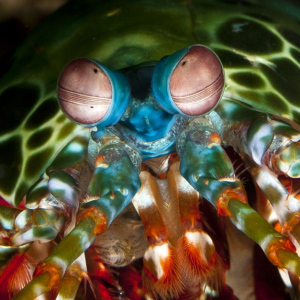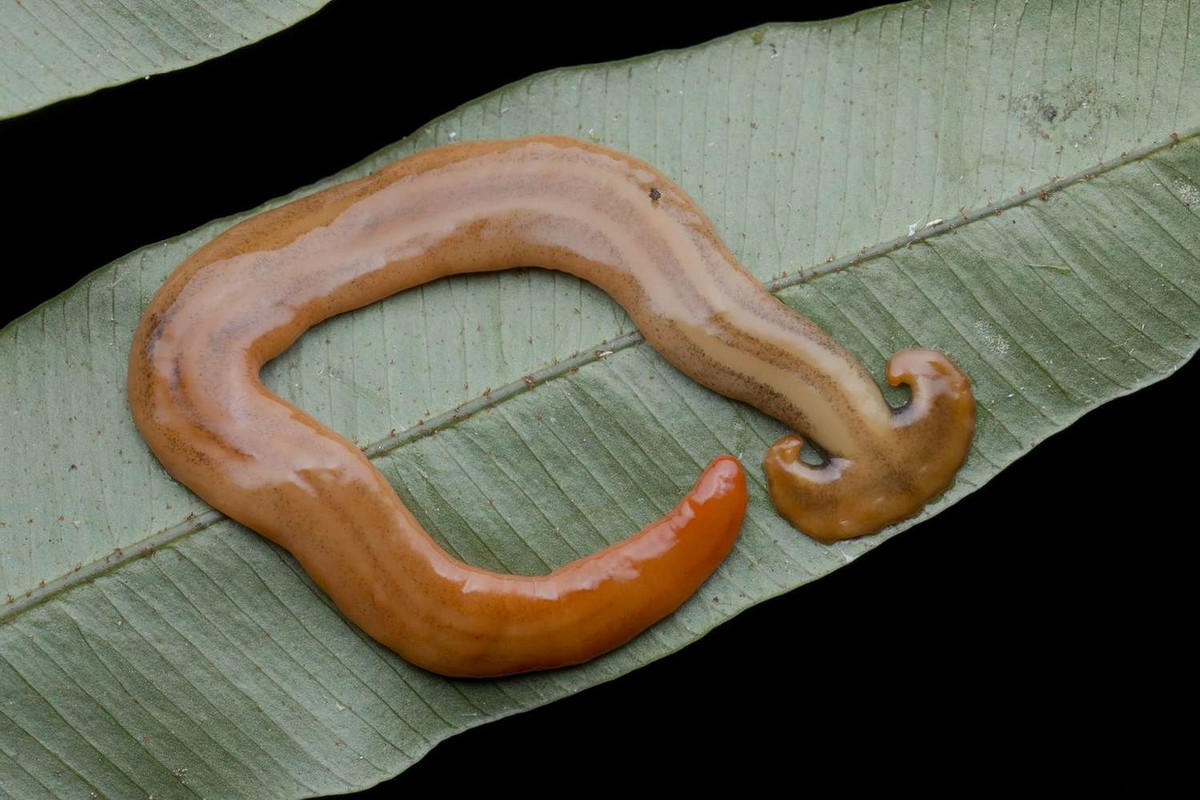
Inhabiting tropical and subtropical regions of Asia, Australia, South America and some Indo-Pacific islands, hammerhead worms (genus Bipalium) belong to an ancient group of invertebrates known as terrestrial flatworms (Geoplanidae). Photo: ThoughtCo.
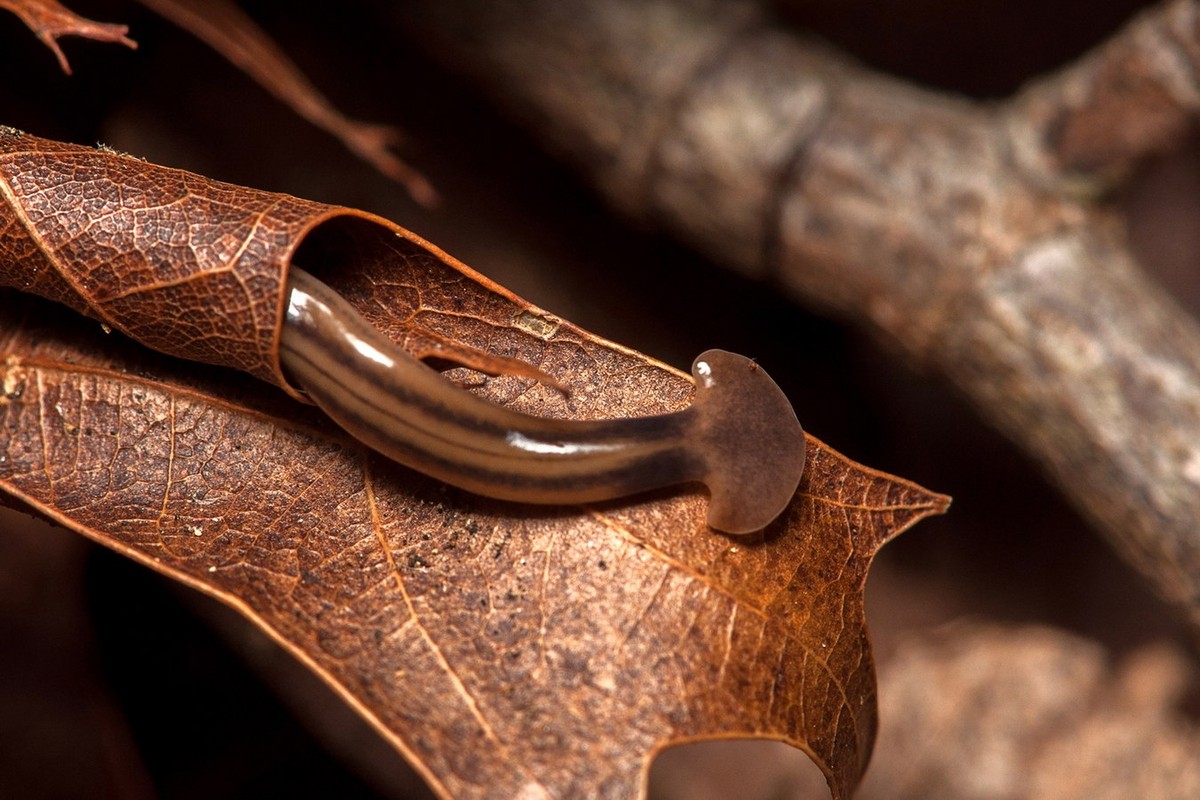
The name Bipalium means “two shovels”, referring to the strange, laterally extended heads that are characteristic of hammerhead worms. Photo: National Geographic.
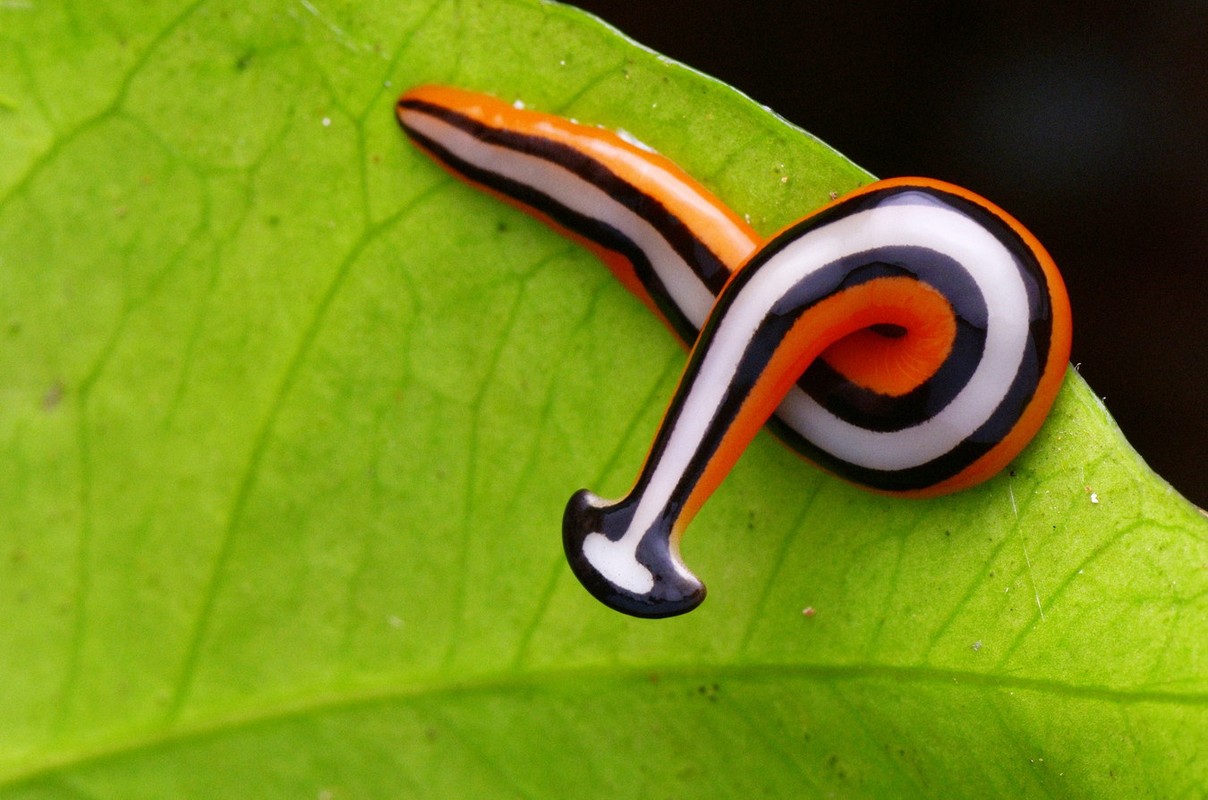
To date, more than 60 species of hammerhead worms have been scientifically described. They range in size from a few centimeters to half a meter long. Many species have stripes, bands and a variety of colors. Photo: Australian Geographic.
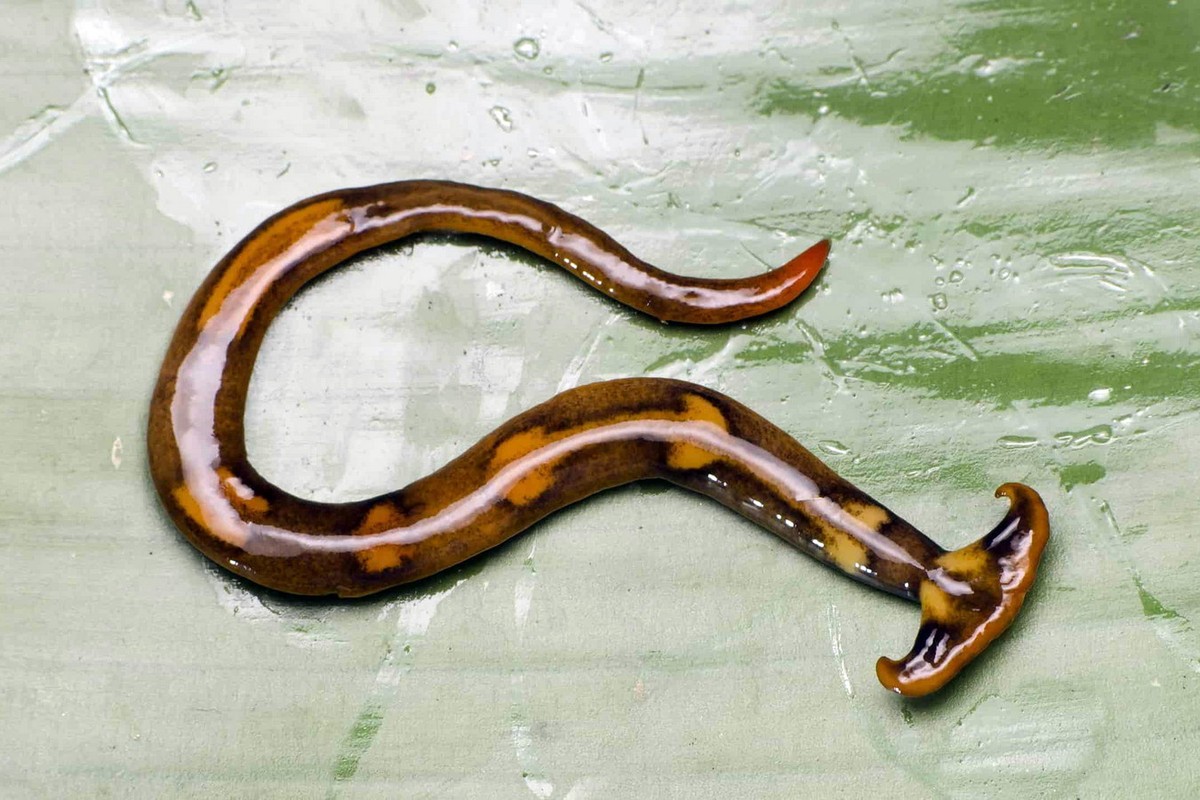
Hammerhead worms mainly live in humid, relatively cool environments to keep their bodies hydrated. They are abundant in forests but are also commonly found in residential areas with suitable living conditions. Photo: AZ Animals.
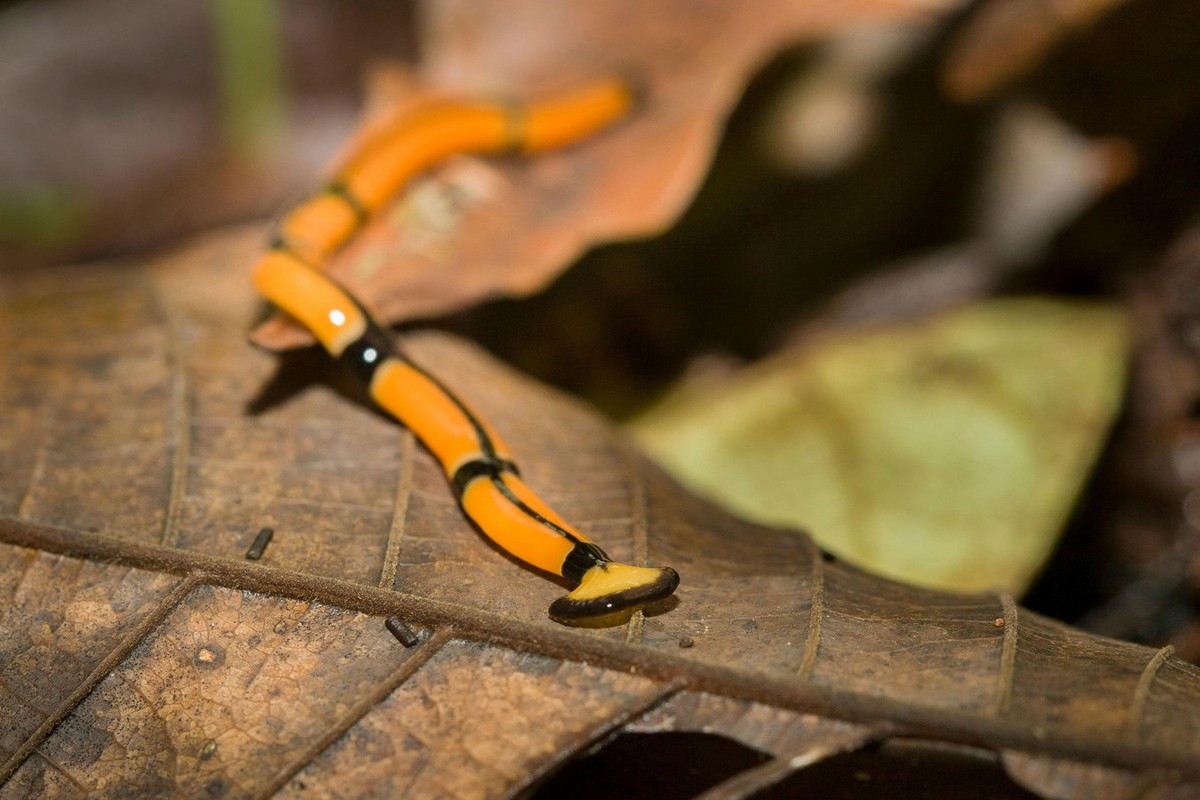
These creatures spend their days hidden under rocks, logs, and fallen leaves. They are formidable predators, emerging after dark to hunt earthworms, snails, slugs, millipedes, and woodlice. Photo: AccuWeather.
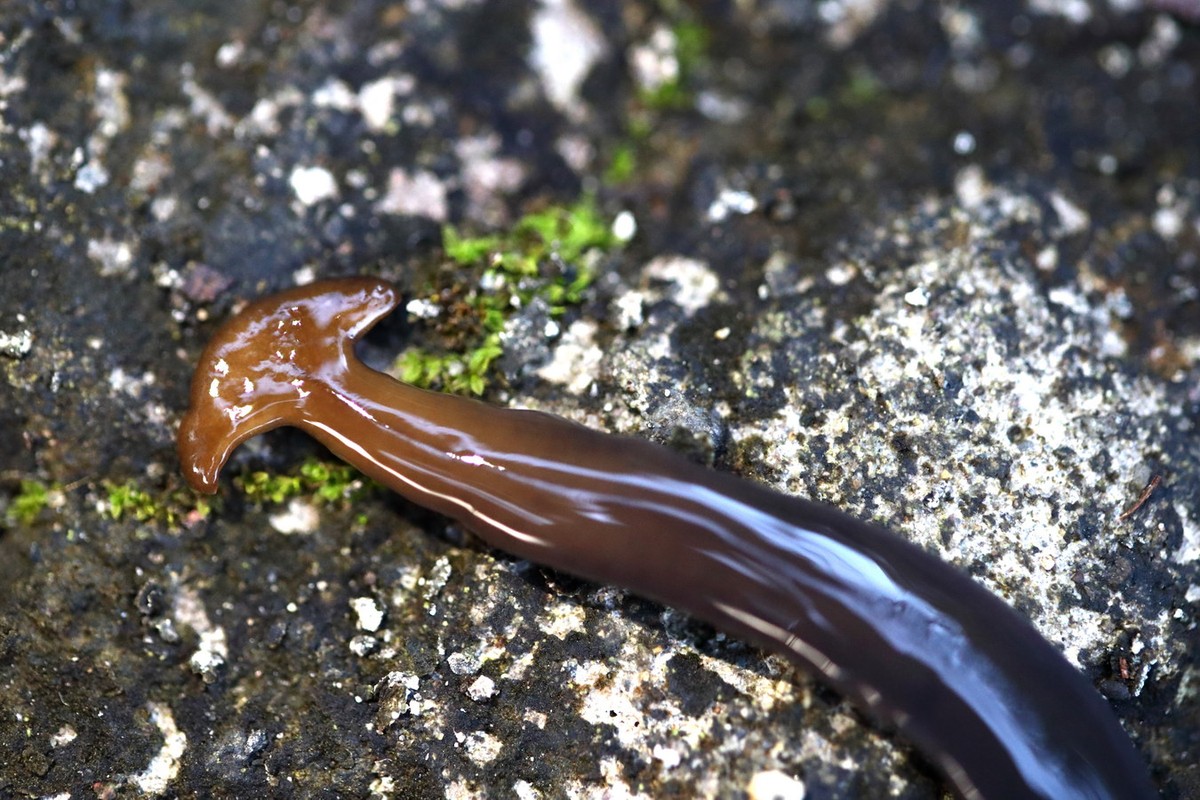
They glide across the ground using a thick mucus and a special structure called a “climbing sole” — a pad covered in a tuft of tiny hairs — and track down prey by slowly moving their hammerhead-shaped heads back and forth. Photo: Wikipedia.
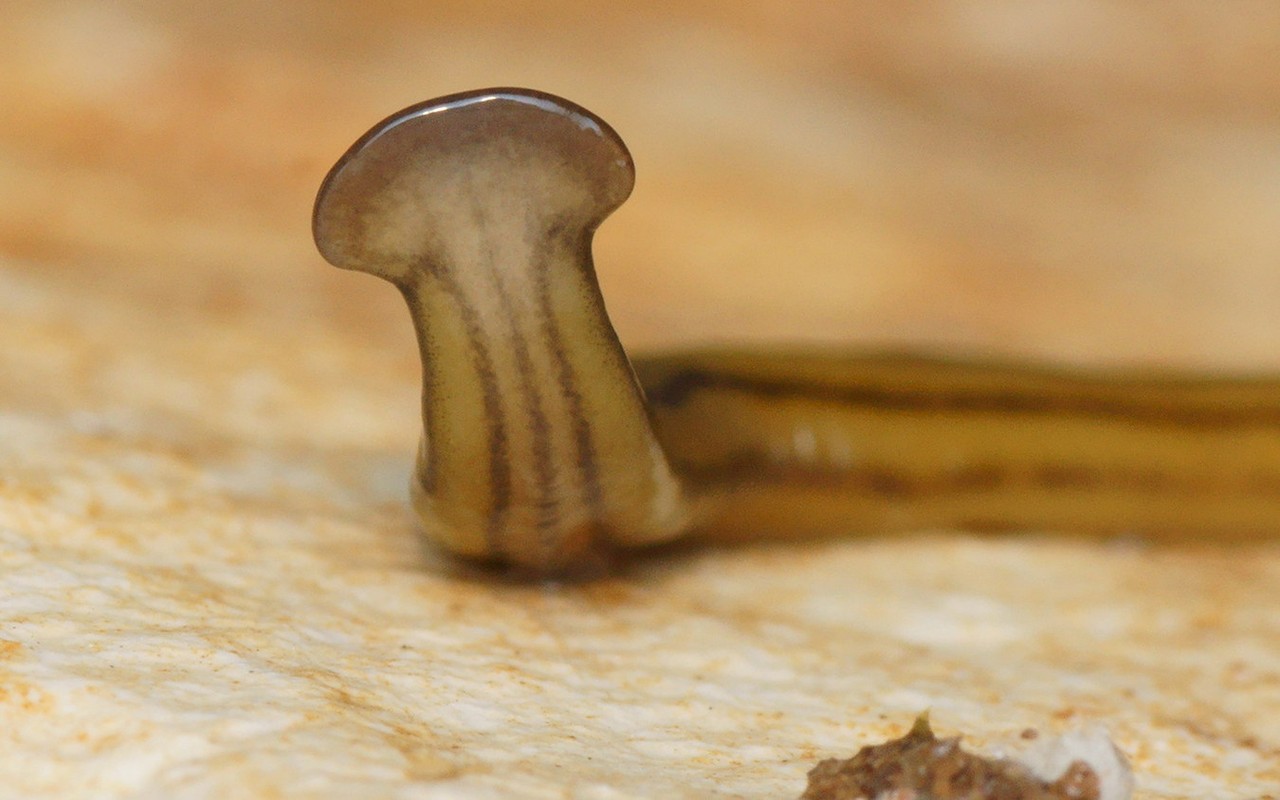
Using special receptors located in a groove on the underside of their heads, the worms detect scents and lock onto their targets. Photo: Live Science.
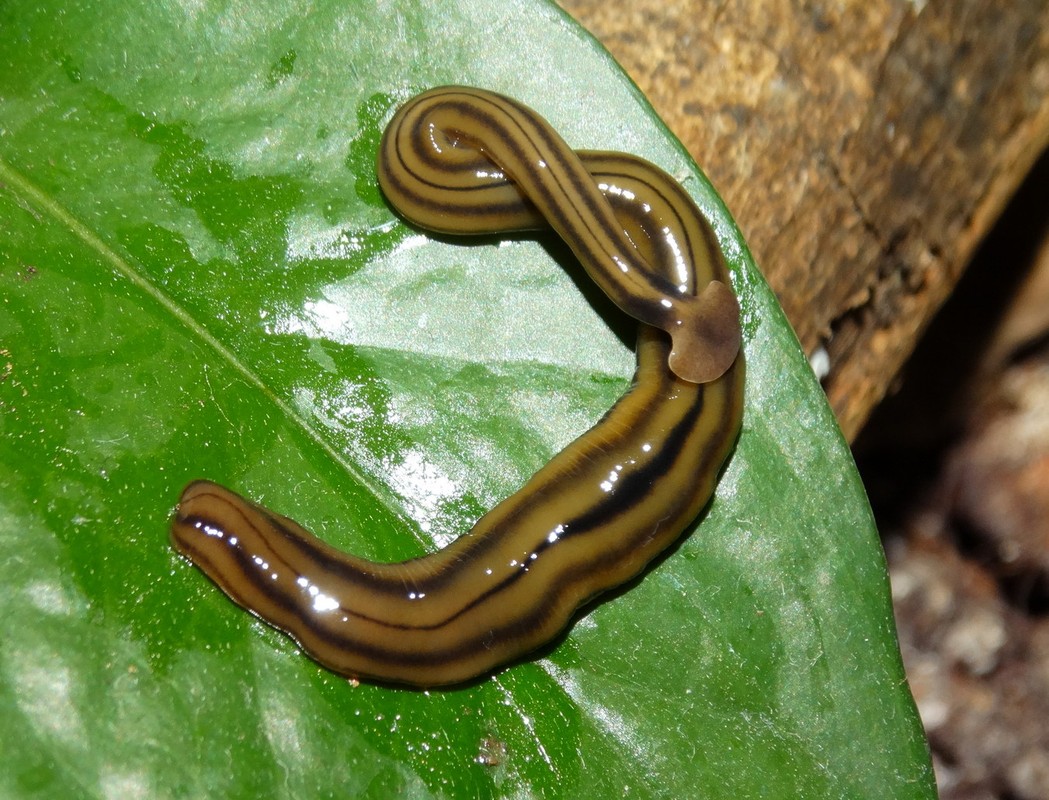
To catch their prey, hammerhead worms wrap their bodies around their victims like a python. They don’t eat them directly, but secrete an enzyme that liquefies the prey before sucking it into their intestines. Photo: Wikipedia.

Some hammerhead worms produce a powerful neurotoxin called tetrodotoxin, both as a defense mechanism and to subdue their prey. This is the first and only known land invertebrate to use tetrodotoxin. Photo: Reddit.
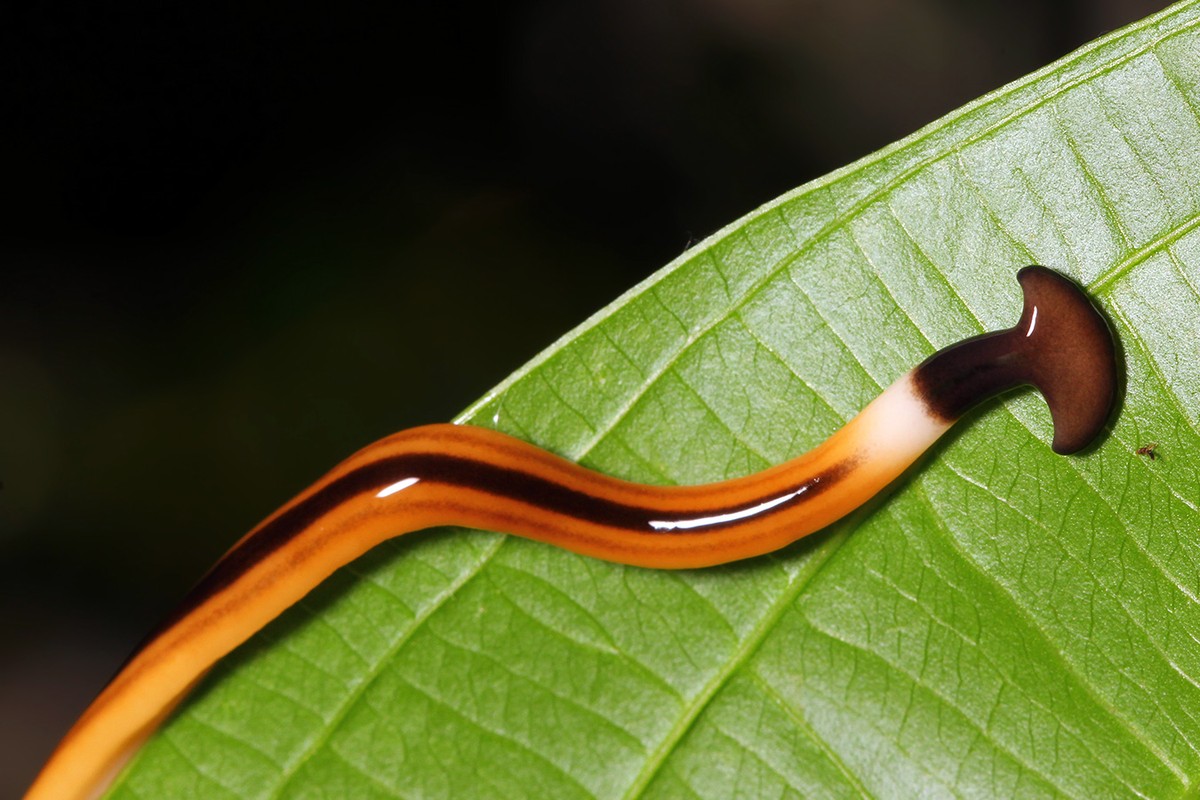
Some species have black spots in the same place as eyes, but in fact they have no real eyes and can only sense light and dark. Photo: HowStuffWorks.
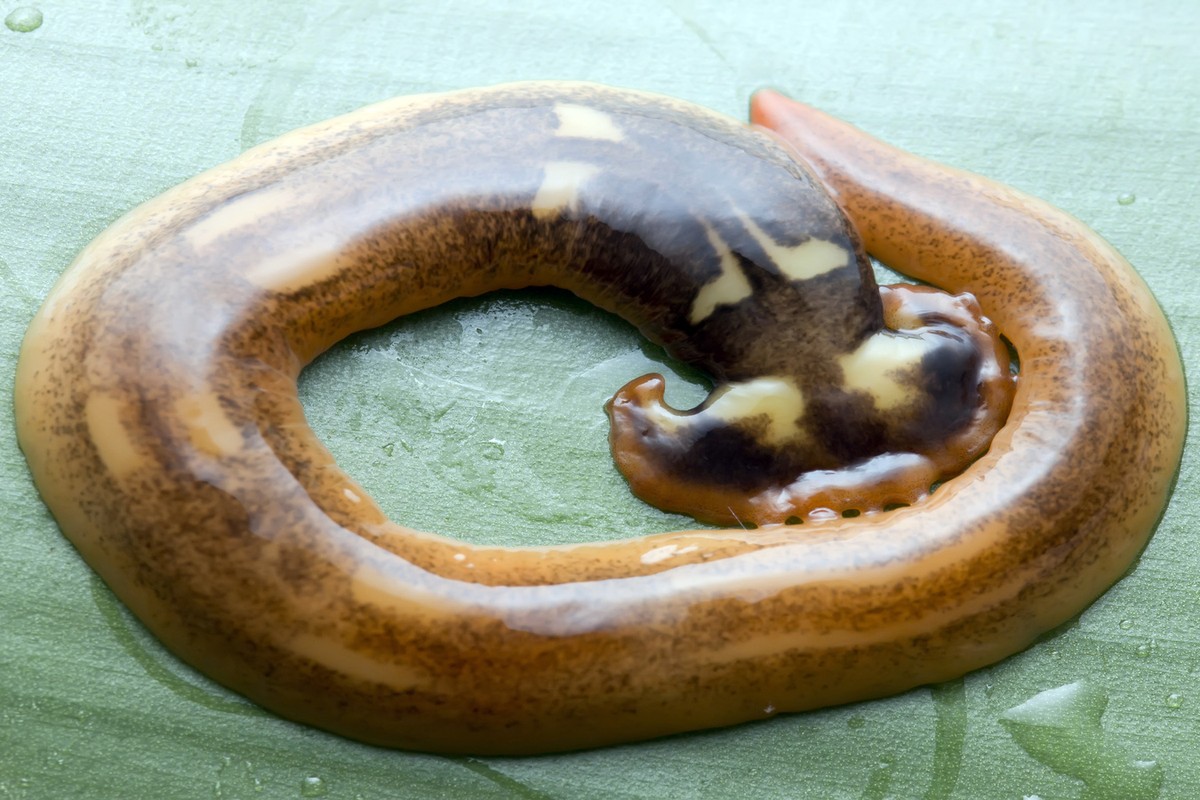
In terms of reproduction, hammerhead worms can reproduce sexually (including males and females, but the most common method of reproduction is “fragmentation”. At that time, the worm will stick its tail into the soil, twist its body and bite it off. Photo: ABC13.
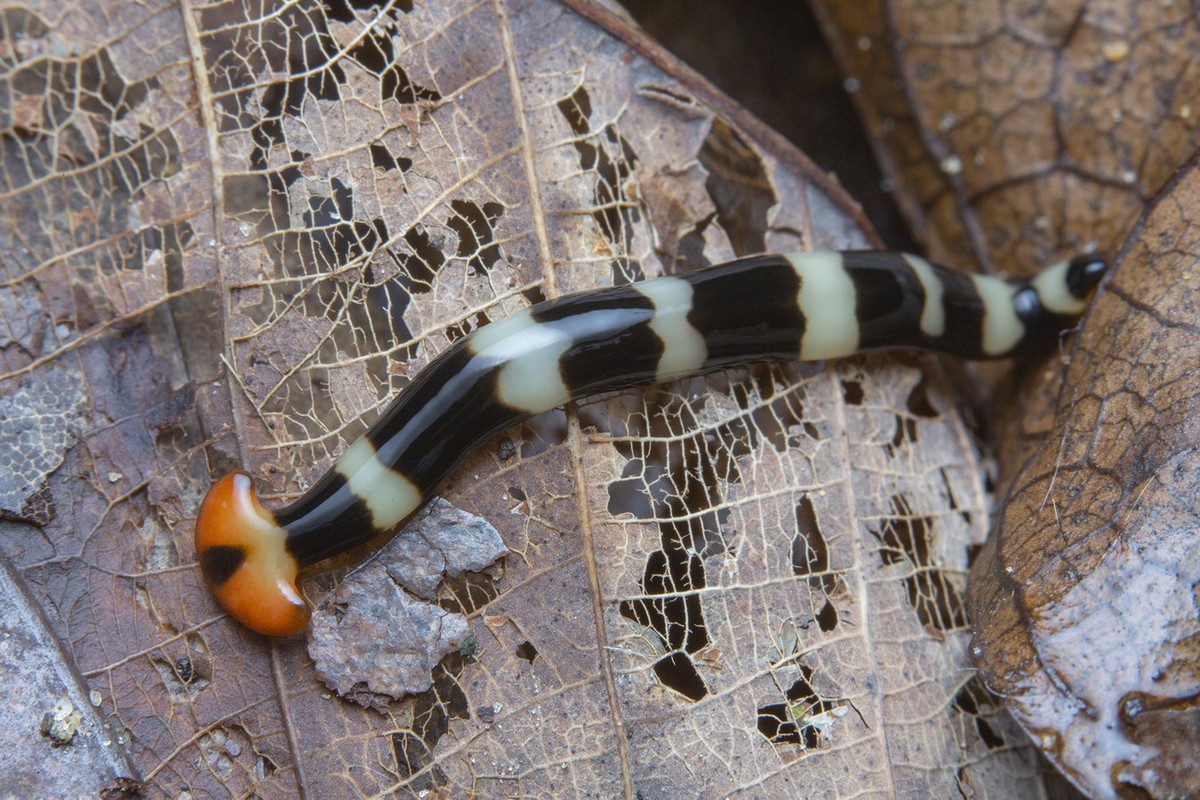
After 7 to 10 days, the tail will grow its own head to form a completely new individual. During this time, the original worm also grows its own tail. They can repeat this special reproductive behavior several times a month. Photo: iNaturalist.
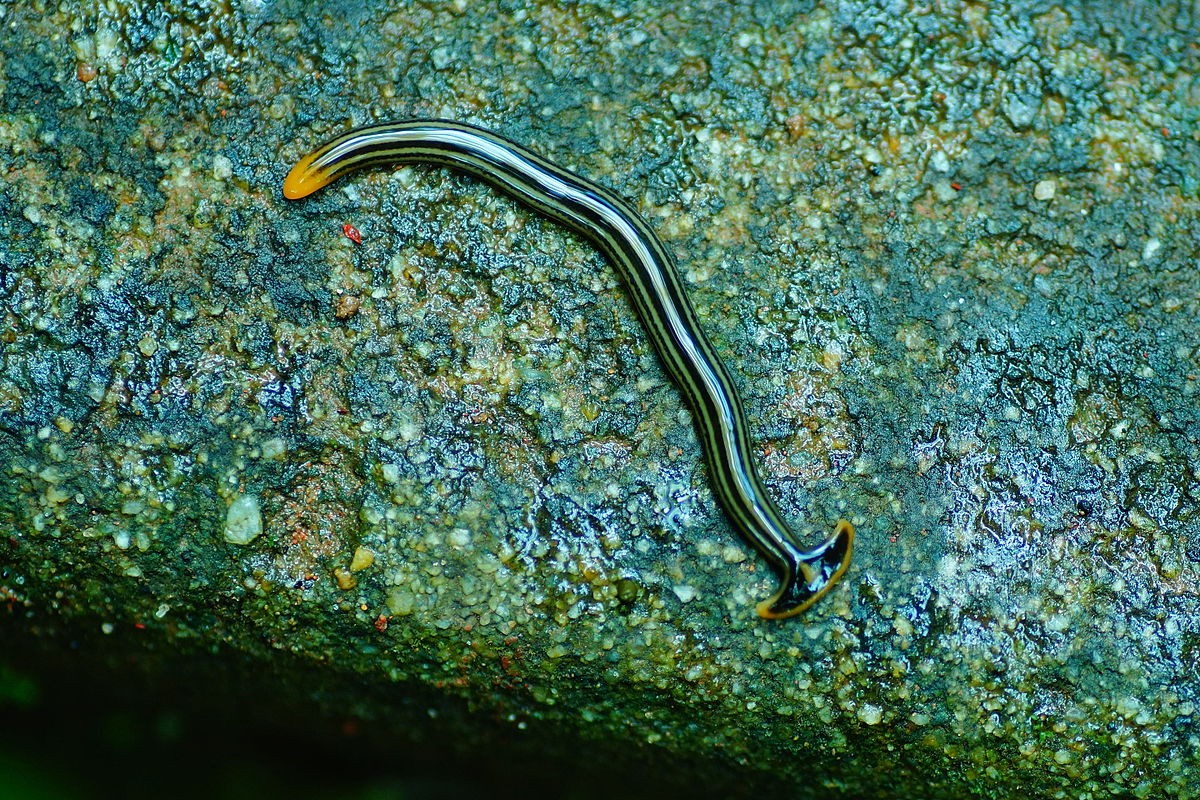
From its original distribution range, hammerhead worms are now widely recorded around the world. In Europe and North America, they are a dangerous invasive species when they destroy earthworms, affecting the local ecosystem. Photo: Wikipedia.
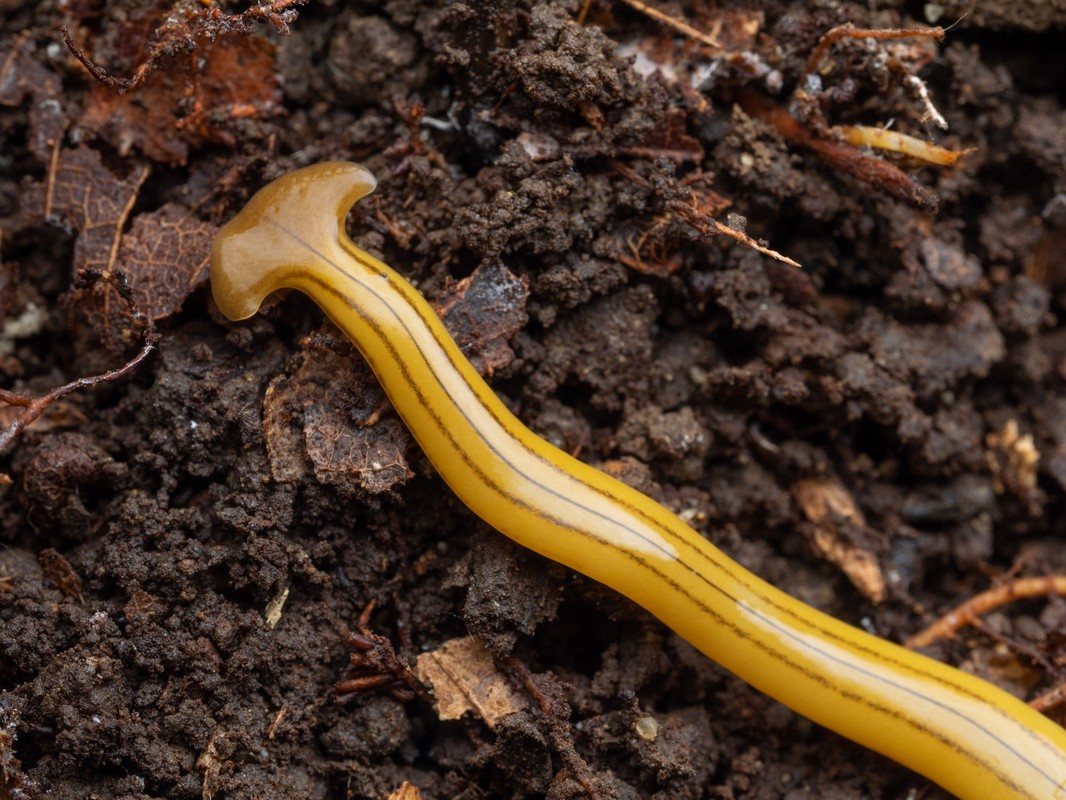
What is more worrying is that hammerhead worms can also carry the infection of a parasite known to infect humans, typically the rat lungworm. Photo: iNaturalist.
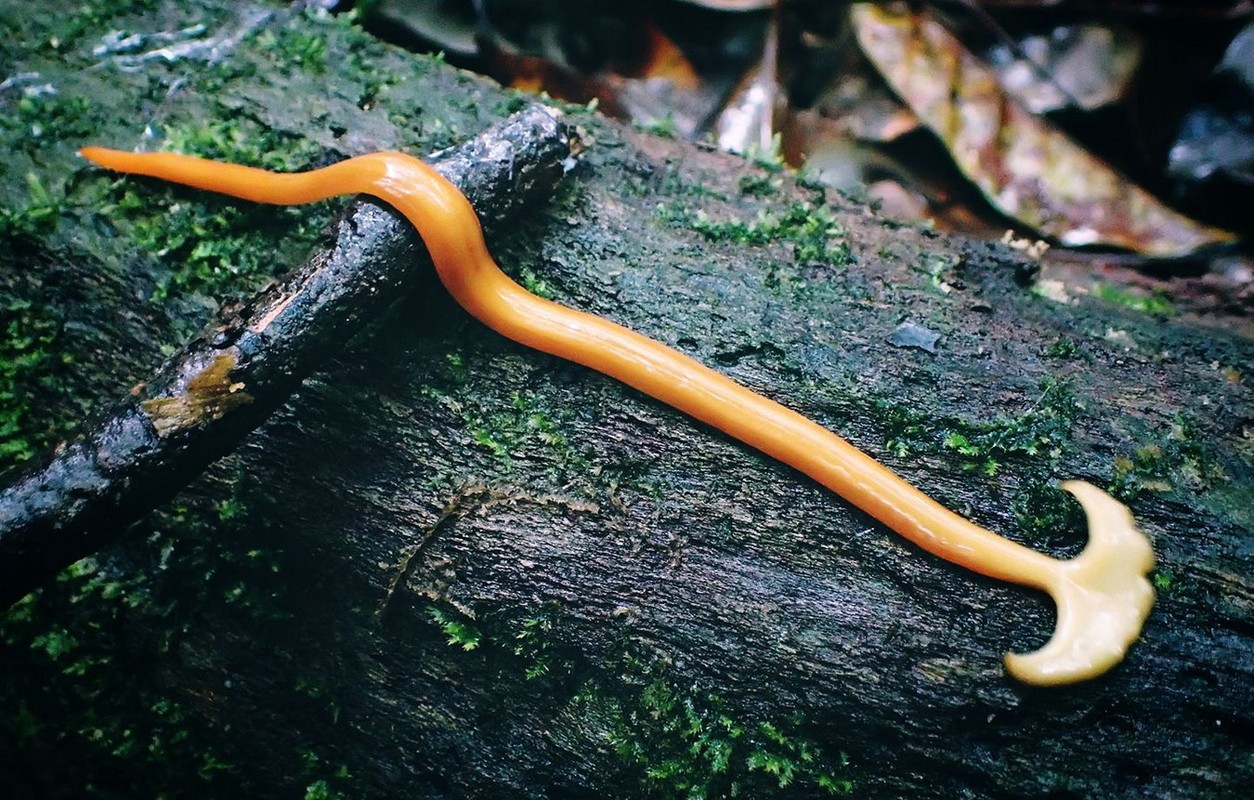
Currently, many research projects on hammerhead worms are being conducted by scientists, focusing on the evolution, biological characteristics and impact of these worms on the ecosystem. Photo: Thrill Adventures.




